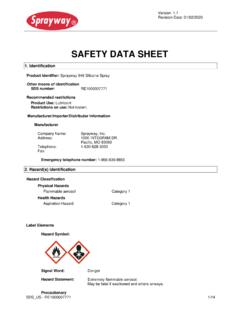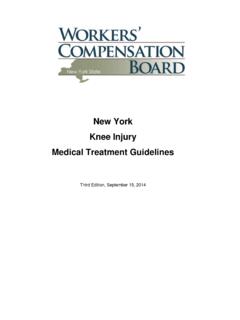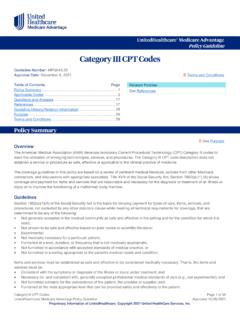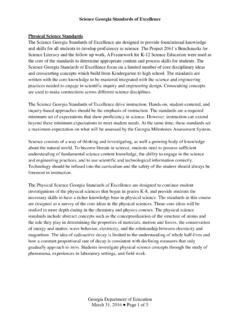Transcription of SAFETY DATA SHEET - Sprayway, Inc
1 SAFETY data SHEET1. Identification1000000075 Product numberSW050 GLASS CLEANERP roduct identifierSprayway, INTEGRAM DRPacific, MO 63069 United StatesCompany information1-630-628-3000 Company phone1-866-836-8855 Emergency telephone US1-952-852-4646 Emergency telephone outsideUS01 Version #cleanerRecommended useNone restrictions2. Hazard(s) identificationLiquefied gasGases under pressurePhysical hazardsNot hazardsNot defined hazardsLabel elementsSignal wordWarningHazard statementContains gas under pressure; may explode if statementPreventionObserve good industrial hygiene exposed or concerned: Get medical from sunlight.
2 Store in a well-ventilated of waste and residues in accordance with local authority (s) not otherwiseclassified (HNOC)None Composition/information on ingredientsMixturesCAS number%Common name and synonymsChemical - - 10 Ethyl Alcohol106-97-81 - components below reportable levels90 - 10074-98-61 - *Designates that a specific chemical identity and/or percentage of composition has been withheld as a trade First-aid measuresMove to fresh air. Call a physician if symptoms develop or adverse effects due to skin contact are contact1 / 10 Product name: SW050 GLASS CLEANERP roduct #: 1000000075 Version #: 01 Issue date: 03-09-2018 SDS USNo specific first aid measures contactNot likely, due to the form of the contact with eyes may cause temporary importantsymptoms/effects, acute anddelayedProvide general supportive measures and treat of immediatemedical attention and specialtreatment neededEnsure that medical personnel are aware of the material(s) involved, and take precautions toprotect information5.
3 Fire-fighting measuresWater fog. Foam. Dry chemical powder. Carbon dioxide (CO2).Suitable extinguishing mediaNone extinguishingmediaDuring fire, gases hazardous to health may be hazards arising fromthe chemicalSelf-contained breathing apparatus and full protective clothing must be worn in case of protective equipmentand precautions for firefightersIn case of fire: Stop leak if safe to do so. Do not move cargo or vehicle if cargo has been exposedto heat . Move containers from fire area if you can do so without risk. Containers should be cooledwith water to prevent vapor pressure build up.
4 For massive fire in cargo area, use unmanned hoseholder or monitor nozzles, if possible. If not, withdraw and let fire burn fightingequipment/instructionsCool containers exposed to flames with water until well after the fire is methodsContents under pressure. Pressurized container may explode when exposed to heat or fire hazards6. Accidental release measuresKeep unnecessary personnel away. Keep people away from and upwind of spill/leak. Keep out oflow areas. Many gases are heavier than air and will spread along ground and collect in low orconfined areas (sewers, basements, tanks).
5 Wear appropriate protective equipment and clothingduring clean-up. Emergency personnel need self-contained breathing equipment. Do not touchdamaged containers or spilled material unless wearing appropriate protective clothing. Ventilateclosed spaces before entering them. Local authorities should be advised if significant spillagescannot be contained. For personal protection, see section 8 of the precautions,protective equipment andemergency proceduresRefer to attached SAFETY data sheets and/or instructions for use. Stop leak if you can do so withoutrisk. Move the cylinder to a safe and open area if the leak is irreparable.
6 Isolate area until gas hasdispersed. Eliminate all ignition sources (no smoking, flares, sparks, or flames in immediate area).Keep combustibles (wood, paper, oil, etc.) away from spilled material. For waste disposal, seesection 13 of the and materials forcontainment and cleaning upAvoid discharge into drains, water courses or onto the precautions7. Handling and storageKeep away from heat /sparks/open flames/hot surfaces. - No smoking. Pressurized container: Donot pierce or burn, even after use. Do not use if spray button is missing or defective. Do not sprayon a naked flame or any other incandescent material.
7 Do not smoke while using or until sprayedsurface is thoroughly dry. Do not cut, weld, solder, drill, grind, or expose containers to heat , flame,sparks, or other sources of ignition. Ground and bond containers when transferring material. Closevalve after each use and when empty. Protect cylinders from physical damage; do not drag, roll,slide, or drop. When moving cylinders, even for short distances, use a cart (trolley, hand truck,etc.) designed to transport cylinders. Suck back of water into the container must be prevented. Donot allow backfeed into the container. Purge air from system before introducing gas.
8 Use onlyproperly specified equipment which is suitable for this product, its supply pressure andtemperature. Contact your gas supplier if in doubt. Do not re-use empty containers. Do not get ineyes, on skin, or on clothing. Avoid prolonged exposure. Use only in well-ventilated areas. Wearappropriate personal protective equipment. Observe good industrial hygiene for safe handlingLevel 1 under pressure. Do not expose to heat or store at temperatures above 120 F/49 C ascan may burst. Do not puncture, incinerate or crush. Do not handle or store near an open flame, heat or other sources of ignition.
9 Cylinders should be stored upright, with valve protection cap inplace, and firmly secured to prevent falling or being knocked over. Stored containers should beperiodically checked for general condition and leakage. Store in a well-ventilated place. Storeaway from incompatible materials (see Section 10 of the SDS).Conditions for safe storage,including any incompatibilities2 / 10 Product name: SW050 GLASS CLEANERP roduct #: 1000000075 Version #: 01 Issue date: 03-09-2018 SDS US8. Exposure controls/personal protectionOccupational exposure limitsUS. OSHA Table Z-1 Limits for Air Contaminants (29 CFR )ValueComponentsTypePEL240 mg/m32-Butoxyethanol (CAS111-76-2)50 ppmPEL1900 mg/m3 Ethyl Alcohol (CAS 64-17-5)1000 ppmPEL1800 mg/m3 Propane (CAS 74-98-6)1000 ppmUS.
10 ACGIH Threshold Limit ValuesValueComponentsTypeTWA20 ppm2-Butoxyethanol (CAS111-76-2)STEL1000 ppmButane (CAS 106-97-8)STEL1000 ppmEthyl Alcohol (CAS 64-17-5)US. NIOSH: Pocket Guide to Chemical HazardsValueComponentsTypeTWA24 mg/m32-Butoxyethanol (CAS111-76-2)5 ppmTWA1900 mg/m3 Butane (CAS 106-97-8)800 ppmTWA1900 mg/m3 Ethyl Alcohol (CAS 64-17-5)1000 ppmTWA1800 mg/m3 Propane (CAS 74-98-6)1000 ppmBiological limit valuesACGIH Biological Exposure IndicesValueComponentsDeterminantSpecime nSampling Time200 mg/gButoxyaceticacid (BAA),with hydrolysisCreatinine inurine*2-Butoxyethanol (CAS111-76-2)* - For sampling details, please see the source guidelinesUS - California OELs.











